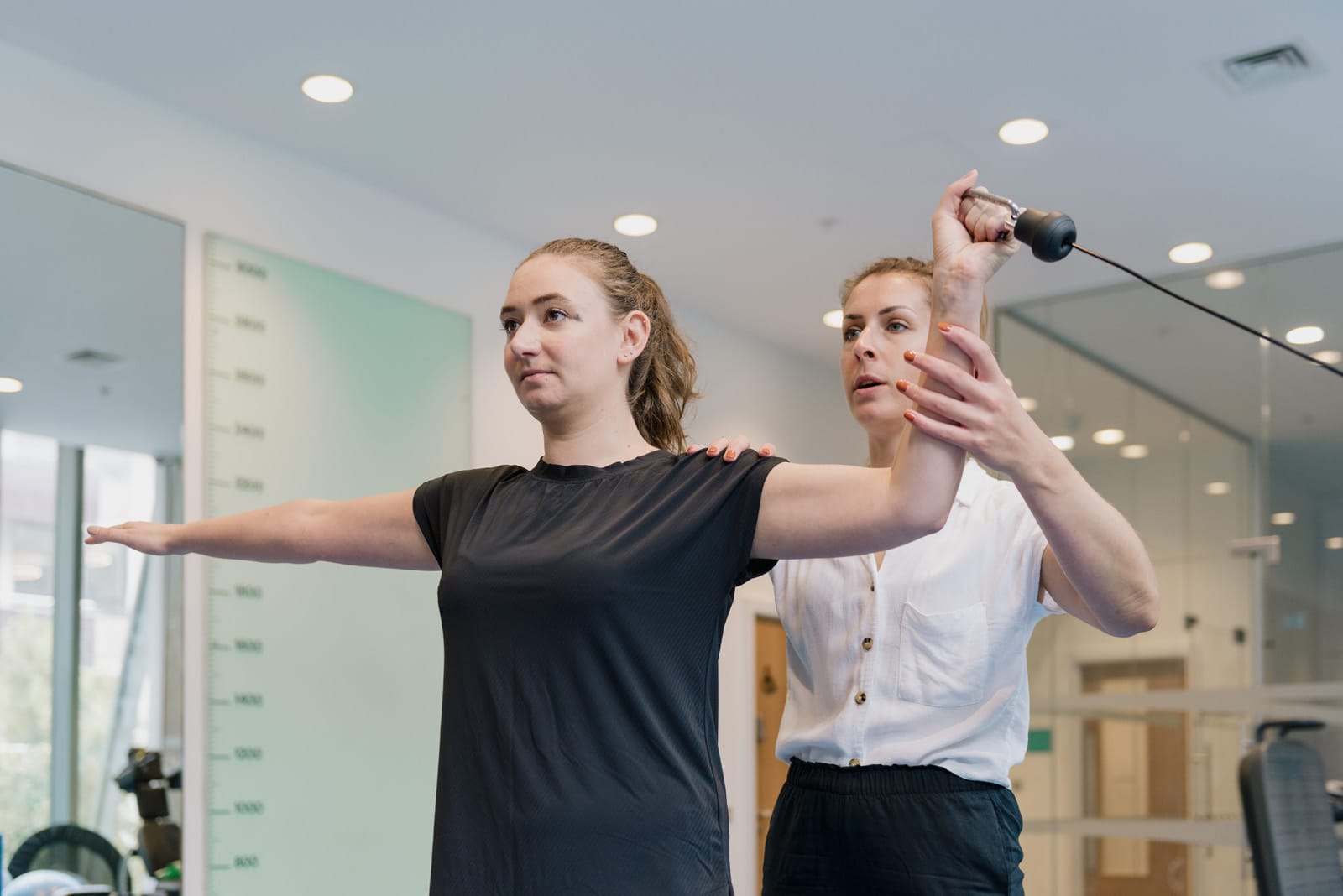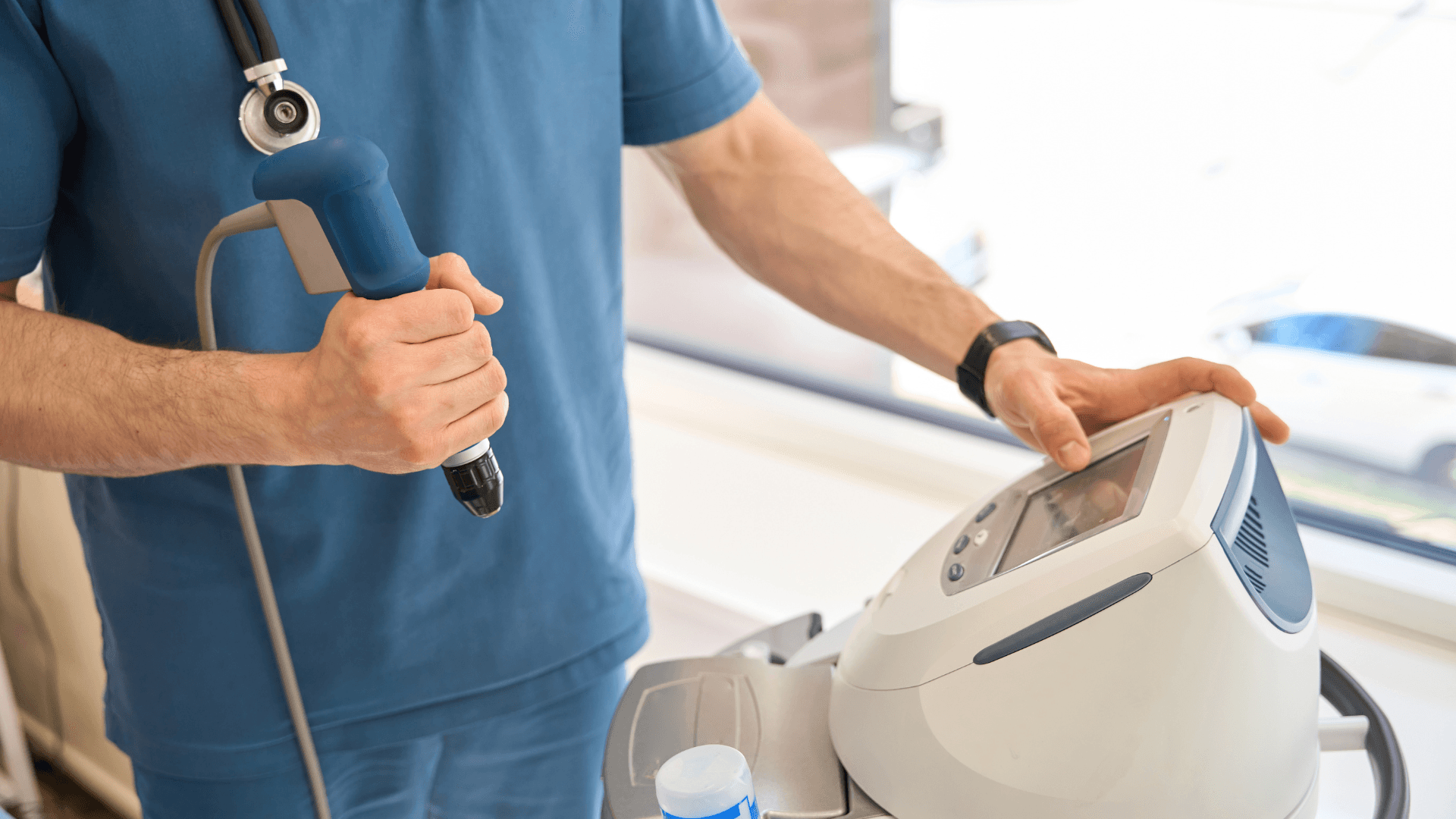What is Extracorporeal Shockwave Therapy?

Pure Sports Medicine
- 18 September, 2019
- Shockwave Therapy
- 3 min read
Extracorporeal Shockwave Therapy is a non-invasive treatment for musculoskeletal conditions causing pain, primarily used to treat chronic tendon, fascia and muscle disorders. Ultrasound can be used to assist with positioning of the device, which delivers low energy soundwaves into body tissue.

The most common indications for shockwave therapy include: Plantar Fasciopathy, Achilles Tendinopathy, Patella Tendinopathy, Greater Trochanteric Pain Syndrome, Hamstring Tendinopathy, Calcific Tendinosis in the Shoulder, Tennis Elbow and Golfer’s Elbow.
Extracorporeal shockwave therapy is typically done for several sessions, determined by response to treatment and the condition being treated. Usually between 3 and 6 sessions are required and spaced one week apart.
How does shockwave therapy work?
Shockwave therapy works to:
- Increase expression of growth factors, which aim to promote healing
- Cause mast cell activation and dispersion of pain mediators, to reduce pain
When do we use Shockwave Therapy?
Shockwave therapy may be offered to patients who have not responded well enough to other treatments such as Physiotherapy, orthotics (insoles), pain relief and rest. Shockwave Therapy should be used alongside a rehabilitation program, aiming to improve biomechanics, strengthen tissue and improve its tolerance to load.

Is shockwave therapy safe?
Shockwave is generally a very safe and well tolerated treatment. Patients may experience discomfort during treatment, however Doctors are able to adjust settings on the Shockwave machine in order to make treatment comfortable and tolerable. Over time, shockwave pressures can be adjusted in order to gain maximal benefit from the treatment, based upon the best evidence.
Following treatment, patients may experience slightly more pain, redness, bruising, swelling and numbness to the area, but symptoms usually resolve within 24-48 hours. There is a very small risk of tissue rupture and this is why it is important to be fully examined prior to treatment, in order to reduce this risk. Adverse effects will be monitored and treatments can be adjusted as necessary.
Contraindications to Shockwave Therapy
There are a number of contraindications to Shockwave Therapy. These include:
- Pregnancy
- Lung tissue in the direction of sound fields
- Presence of cardiac pacemaker
- Corticosteroid injection within the last 3 months
- Over or near bone growth centres
- Malignancy near the treatment area
- Skin infection or irritation at the treatment site
- Coagulopathy (blood clotting disorder)
- Use of anticoagulation (relative contraindication)
What happens during the procedure?
At Pure Sports Medicine, Shockwave Therapy is carried out by our Consultants in Sport and Exercise Medicine. Having established a diagnosis and any previous therapy, Shockwave Therapy may be offered as a potential treatment, with discussion regarding the proposed benefits, potential side effects and treatment regimen.
We will ask you to complete a questionnaire to ascertain pain levels and the impact on function arising from your specific condition.
Having discussed the proposed benefits and possible adverse effects, we will gain consent and proceed with the treatment. You will lie down on a plinth in a comfortable position and the Doctor will put some coupling gel on the injured area to allow shockwaves to pass into tissues more efficiently and then place the applicator on the gel. Each session of shockwave therapy will take 5-10 minutes to complete, depending on the area treated. As most patients do experience some discomfort during the procedure, we will monitor your pain levels throughout and adjust the treatment accordingly, aiming to apply pressures within a specific range to treat specific conditions.
After the treatment you will be able to get up and walk straight away. If you do experience discomfort following the shockwave treatment you can take over the counter painkillers (such as paracetamol) but do not take anti-inflammatories (ibuprofen) or apply ice to the area, as these can interfere with the body’s healing process. We advise refraining from any high intensity of aggravating activities for 48 hours post-treatment. You will be advised to continue with your usual rehabilitation program alongside shockwave therapy.
To book an initial consultation with one of our Sports Doctors, please click here.

Advice
Over the last 20+ years our experts have helped more than 100,000 patients, but we don’t stop there. We also like to share our knowledge and insight to help people lead healthier lives, and here you will find our extensive library of advice on a variety of topics to help you do the same.
OUR ADVICE HUBS See all Advice Hubs